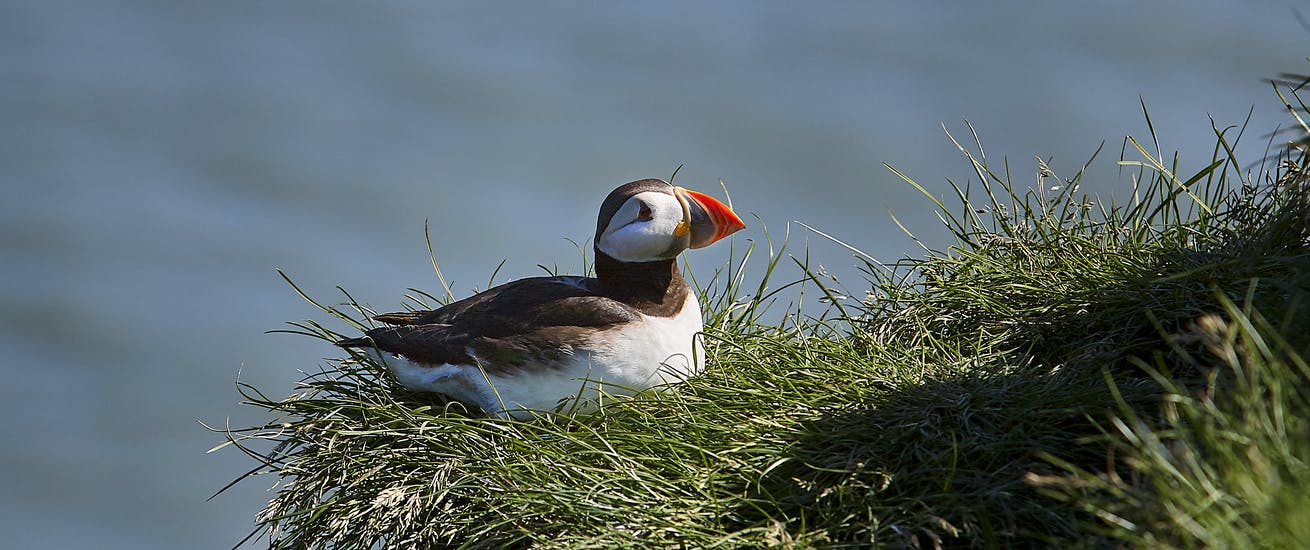
Puffins in Iceland
Puffins are undoubtedly one of the most beloved and iconic birds in Iceland. They are known for their distinctive appearance, with their colourful beaks and bright orange feet. While it is challenging to provide an exact number, estimates suggest that there are around two million puffins in Iceland during the breeding season.
About 60% of the world's puffin population breeds around the Icelandic shore and on the islands. Since 2000, a sharp population decline has been seen in Iceland, Norway, the Faroe Islands, Greenland and, in fact, all the North Atlantic Region. This is due to the diminution of food supply, such as sand eels, and due to climate change.
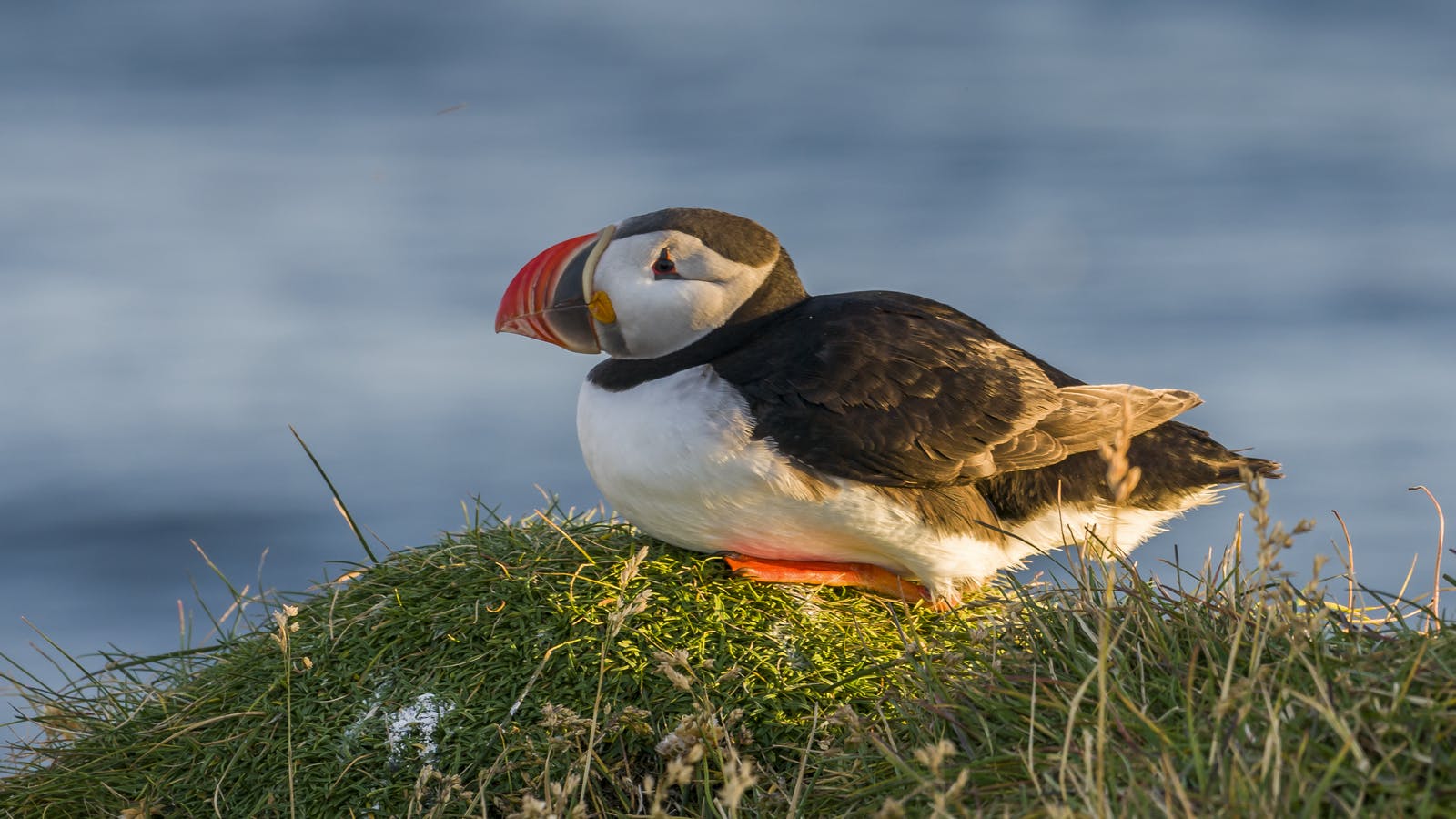
Experience Iceland in One Place
This one-of-a-kind exploratorium is packed with interactive exhibits that bring Iceland's stunning nature and wildlife to life. Dive deep into glaciers, volcanoes, and the magical Northern Lights – there's something for everyone at Perlan. Here, you can even experience a life-size version of the famous bird cliff, Látrabjarg Cliff. It's a fun-filled adventure for all ages, where the incredible beauty of Iceland is right at your fingertips. Check out all exhibitions here!
Breeding and Nesting Habits
Puffins typically arrive in Iceland during late April or early May to breed. They form large colonies, often on steep coastal cliffs or on offshore islands. These colonies are called "puffinries" or "puffin colonies." Puffins are burrow-nesting birds. Each puffin pair has its own borrow, which is a hole in the ground in a tunnel that is 1-3 metres long. At the end of the tunnel, the puffin lays a single egg, and both the male and female take turns incubating it. Puffin grounds are, therefore, full of holes and tunnels. Puffins are monogamous, and they mate for life.
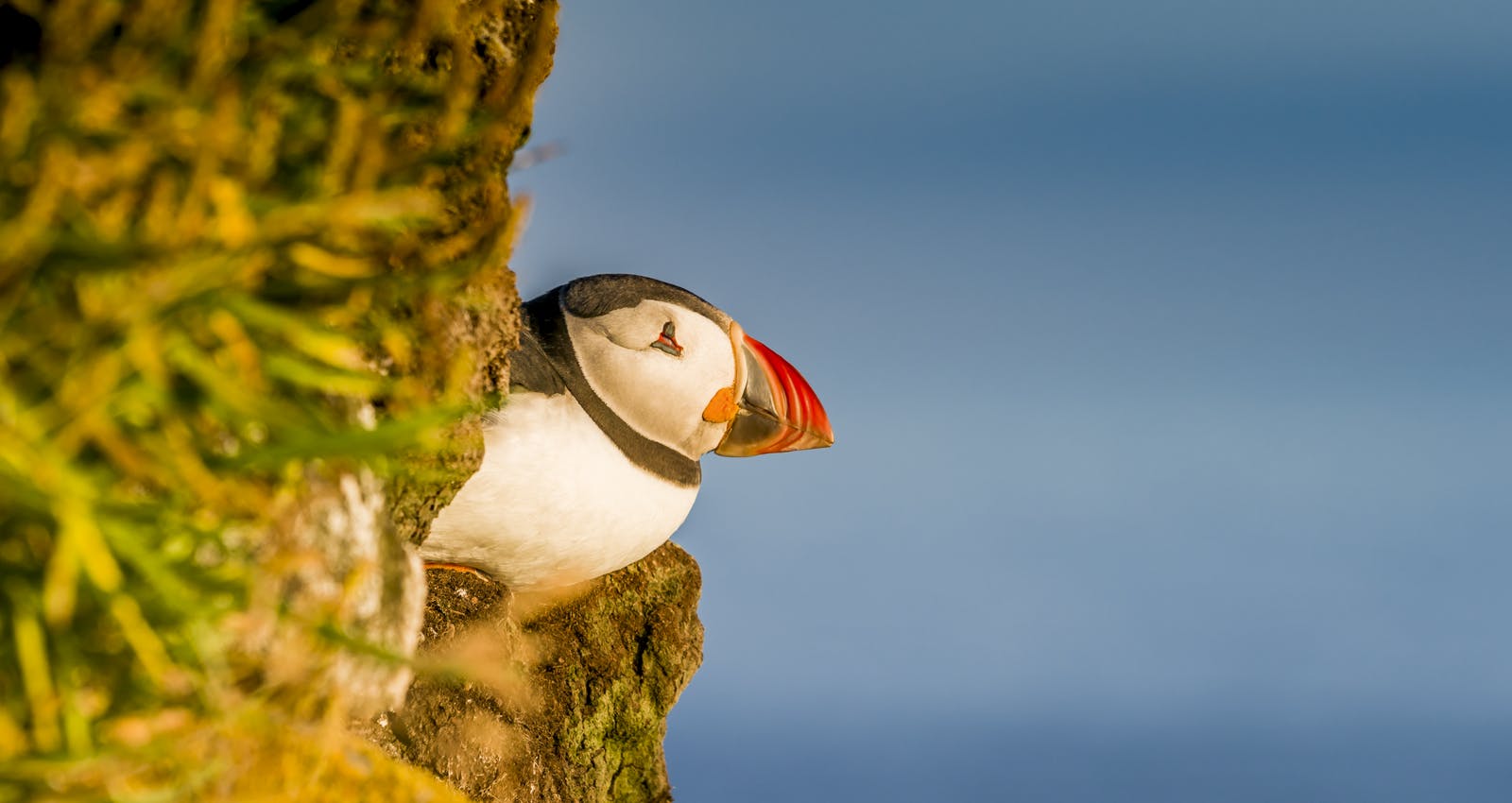
The birds can become very old; the oldest marked puffin from Iceland was 38 years old but the average lifespan is 20-25 years. The chicks of puffins are called pufflings; they live in the dark, borrow underground, and get small fish from their parents until they leave the nest in late summer to live out at sea. Puffins become mature at the age of 4-5, and then they return home to their fledging grounds to steal a burrow or dig a new hole if all the old ones are occupied.
Diet and Feeding Habits
Puffins are excellent divers and feed primarily on small fish, such as sand eels, krill, and capelin. They have specialised bills allowing them to catch and hold multiple fish simultaneously. Puffins can dive up to 60 metres (200 feet) deep in search of their prey. They can also carry a large number of fish in their beaks to feed their chicks.
Puffin Conservation
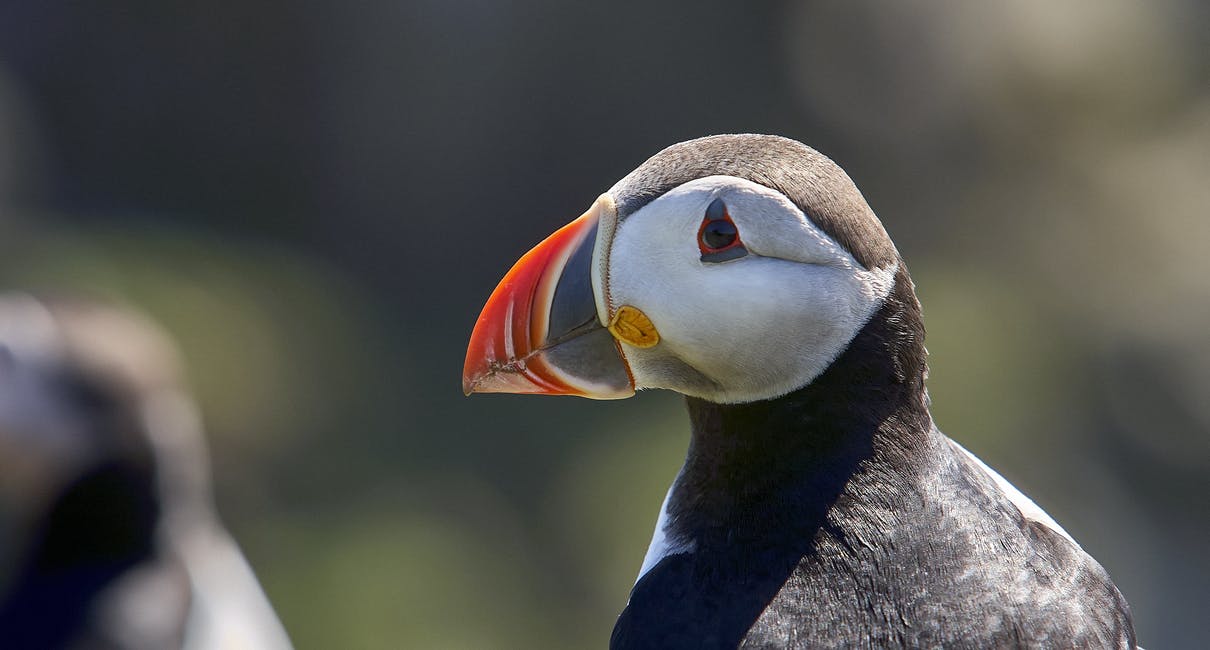
Although puffins are not currently considered endangered, they face challenges due to changes in their food availability and nesting habitats. Climate change, overfishing, and pollution can impact their prey populations and breeding success. Iceland has implemented measures to protect and conserve puffins, including designated nature reserves and restrictions on hunting.
Cultural Significance
Puffins hold a special place in Icelandic culture. They have been featured in traditional folklore and have become an iconic symbol of Icelandic nature, often called the national bird of the Westman Islands. Puffin-themed souvenirs, artwork, and even food dishes featuring puffin meat can be found in Iceland.
Puffin Watching
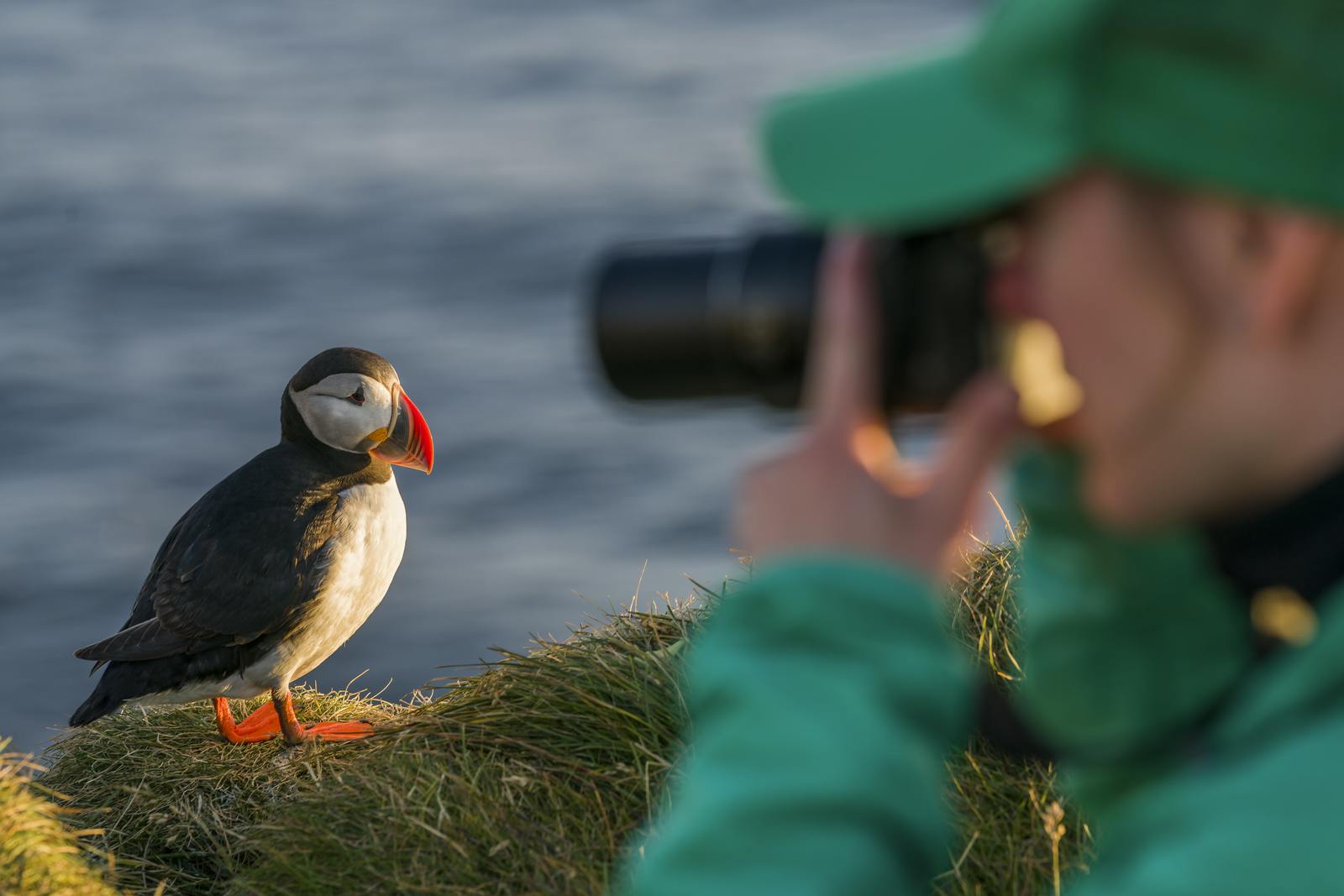
Iceland offers fantastic opportunities for puffin watching. Visiting Iceland during the breeding season provides a unique opportunity to witness these charming birds up close. Puffins' comical appearance, their vibrant beaks, and their clumsy yet agile flight make them a favourite among both locals and visitors, adding to the allure of birdwatching in Iceland.
Locations
- Borgarfjörður Eystri: Located in the northeast, this is probably Iceland's easiest and safest place to see puffins. There is a boardwalk and shelter on the cliffs where the puffins are just at arms-length.
- Lundey and Akurey: These are two small uninhabited islands off the coast of Reykjavík. It is common for tour companies from Reykjavík to visit them for birding tours.
- Vestmannaeyjar (Westman Islands): This archipelago off the south coast of Iceland is home to one of the largest puffin colonies in the world, with an estimated population of over a million birds.
- Látrabjarg: In the Westfjords, Látrabjarg is Europe's largest bird cliff and an important nesting site for puffins. It provides a unique opportunity to observe puffins at eye level.
- Papey Island: This small island in eastern Iceland is home to a significant puffin colony. Access to Papey Island is limited, but guided tours are available during the puffin season.
Timing
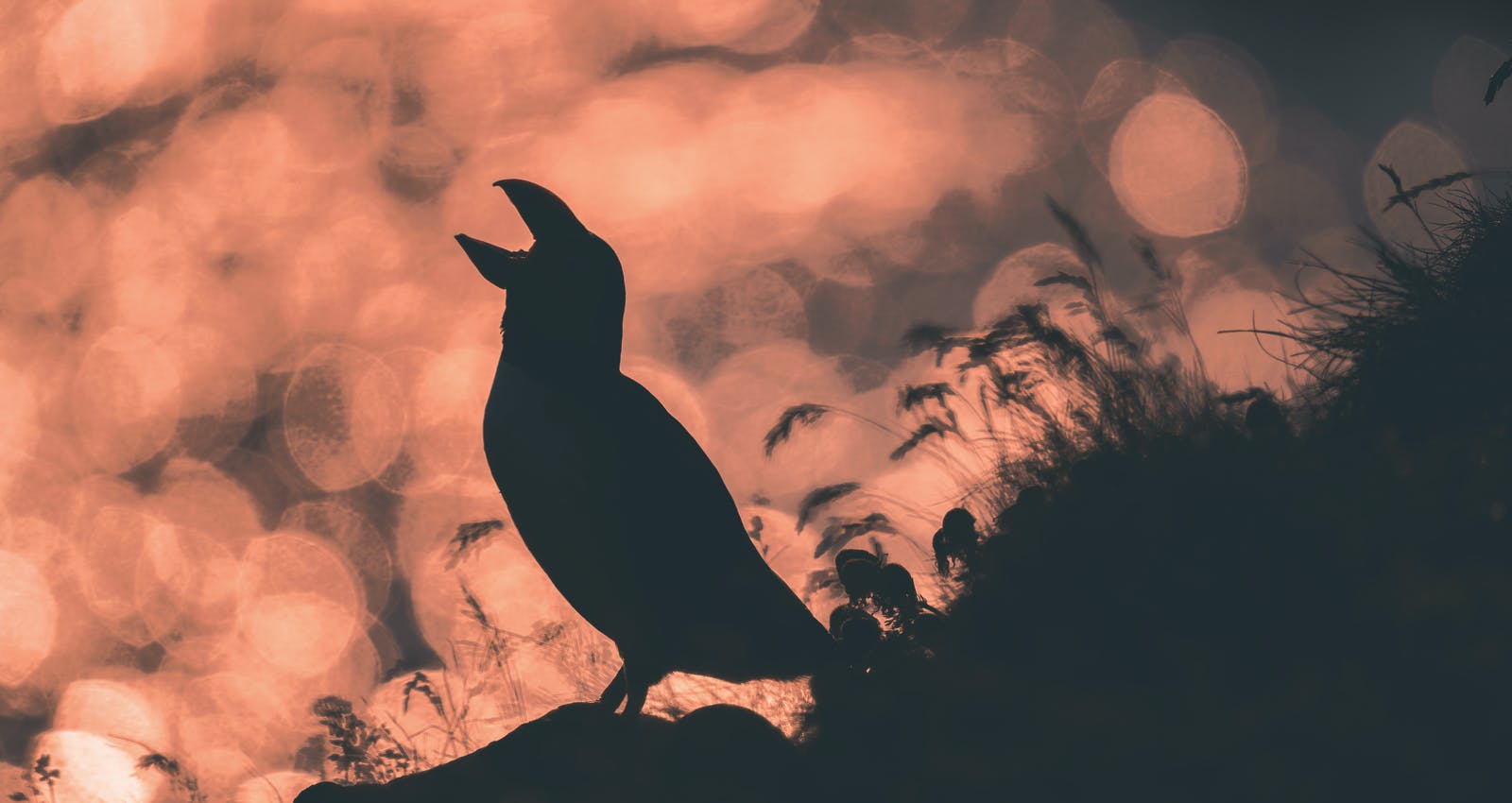
Puffins can be seen in Iceland during the summer months, typically from late April to early August. The peak puffin season is from mid-May to late July when they are nesting and raising their chicks.
Five fun facts about puffin
- Puffins can dive to 60 metres depth (200 feet) for two whole minutes when feeding.
- Despite their small wingspan, the puffin can reach 88 km/h(55m/h) while flying. To do so, he has to flap his wing 400 times/min.
- Puffins mate for life and can become at least 40 years old.
- The colourful nose of the puffin becomes black/greyish during the winter, but very little is known about his 8 months of winter activity.
- It is possible to observe puffins at numerous sites around Iceland. Puffins are the most common bird in Iceland, and about 60% of the world's population breeds them.
Puffins in Iceland FAQ
Where Can I See Puffins in Iceland?
Iceland offers fantastic opportunities for puffin watching. Borgarfjörður Eystri, Vestmannaeyjar, Látrabjarg and Papey Island are the top locations for watching puffins.
How Many Puffins Are There in Iceland?
It is hard to put an exact number to the amount of puffins in Iceland. It is estimated that there are two million puffins in Iceland every year.
What Do Puffins Eat?
Puffins primarily feed on small fish and marine invertebrates.
Popular articles

Guide to the Solar Eclipse 2026
Plan your trip to witness the Solar Eclipse 2026 in Iceland! Discover the best viewing spots, key times, safety tips, and travel advice for this rare celestial event.

Things To Do In Reykjavík In January
Embrace the Icelandic winter with our January Reykjavik itinerary. Enjoy unique events, cultural hotspots, and scenic wonders in the heart of winter.
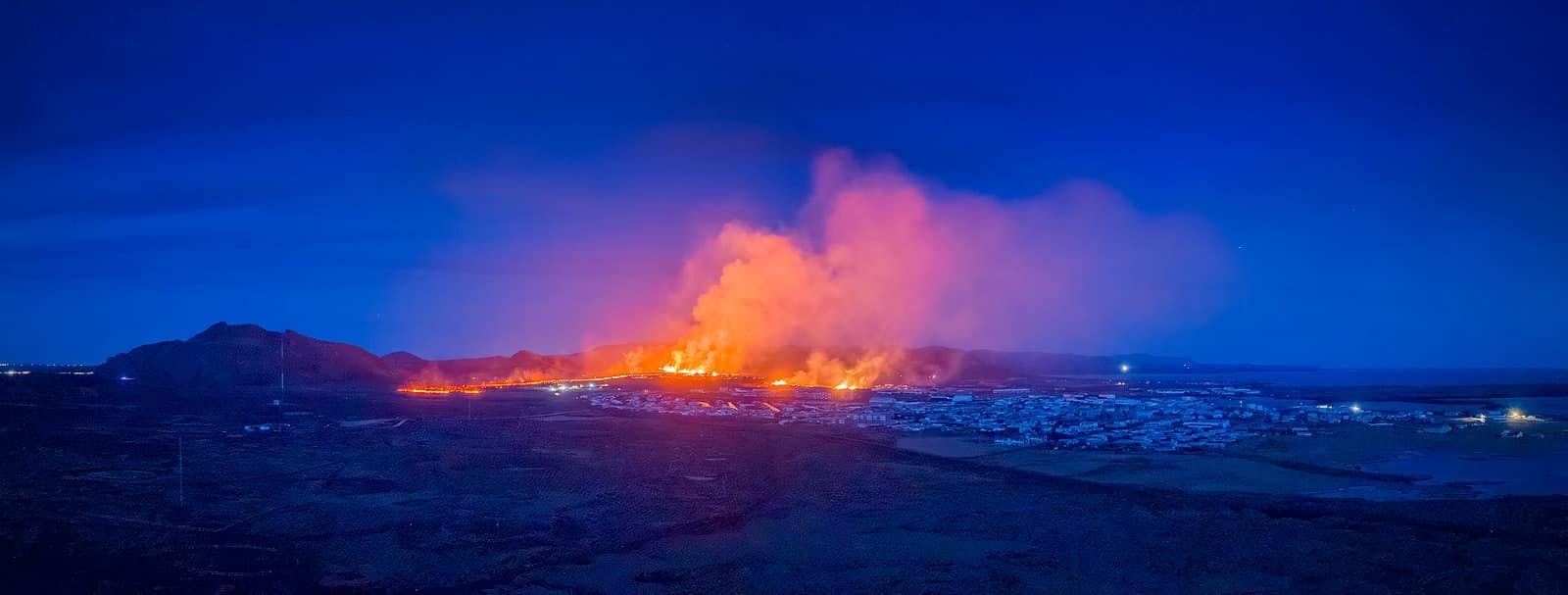
Updates on the Sundhnúkagígar Eruption in the Reykjanes Peninsula!
The current eruption in the Reykjanes Peninsula, is called Sundhnúkagígar Crater Row. See insights on the seismic activity and volcanic eruptions in the area!
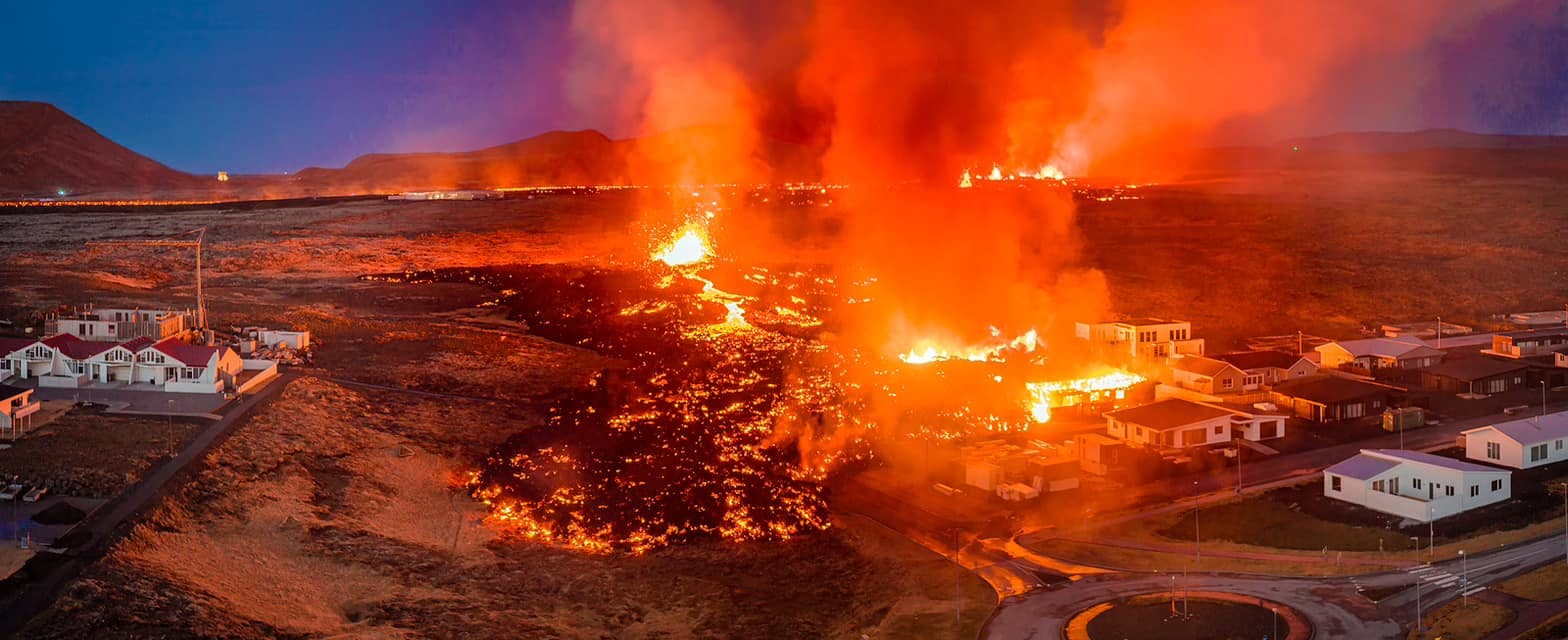
Active Volcanoes in Iceland 2024
Active volcanoes aren't the same thing as active eruptions. A volcano can be considered active even when it is not ejecting ash, rock, gases and magma, so which are active in Iceland in 2024?
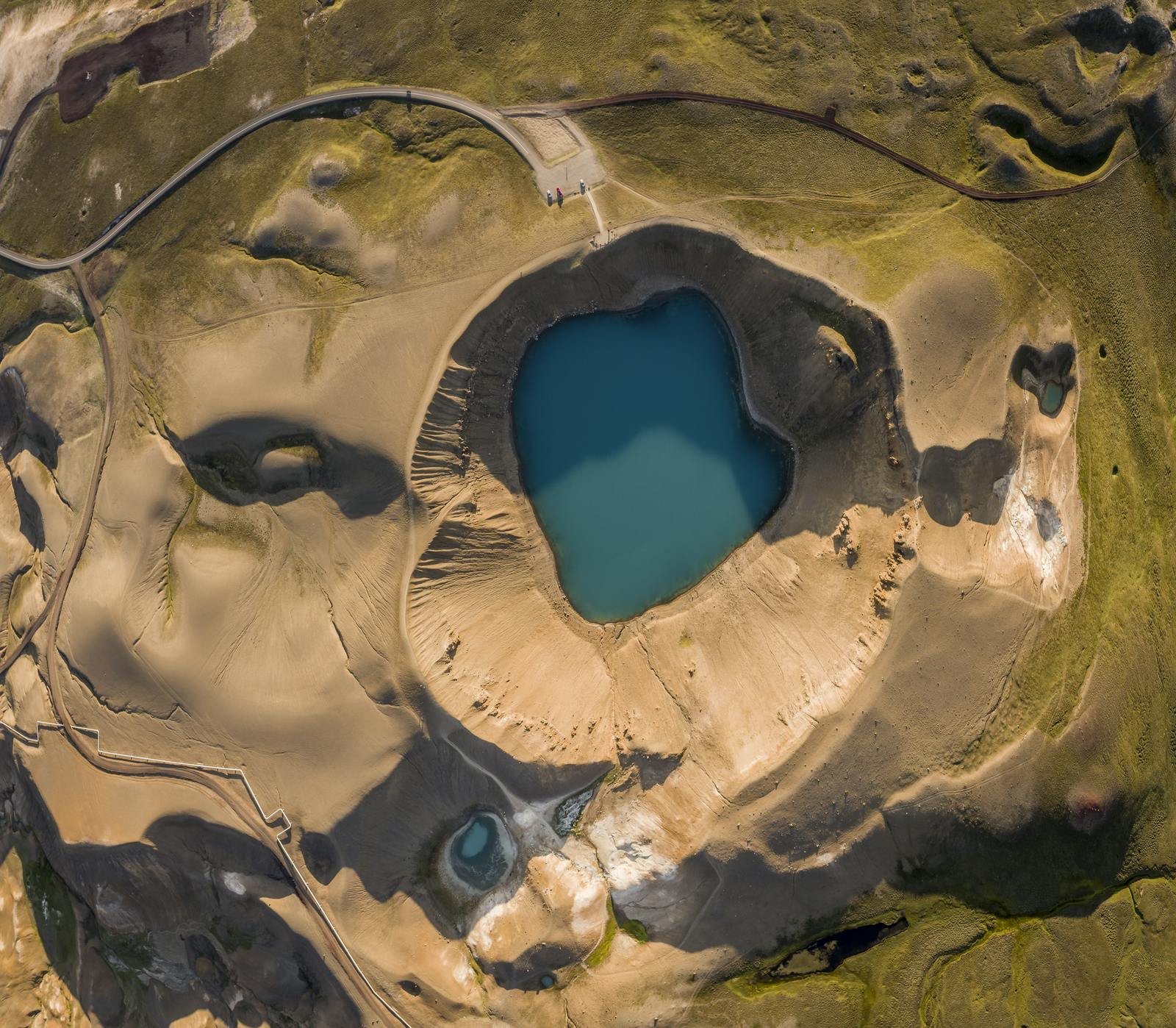
Earthquakes in Iceland
Earthquakes in Iceland are a fact of life. Each year, thousands of small tremors shake the earth, a reminder of the country’s position on a tectonic plate boundary.
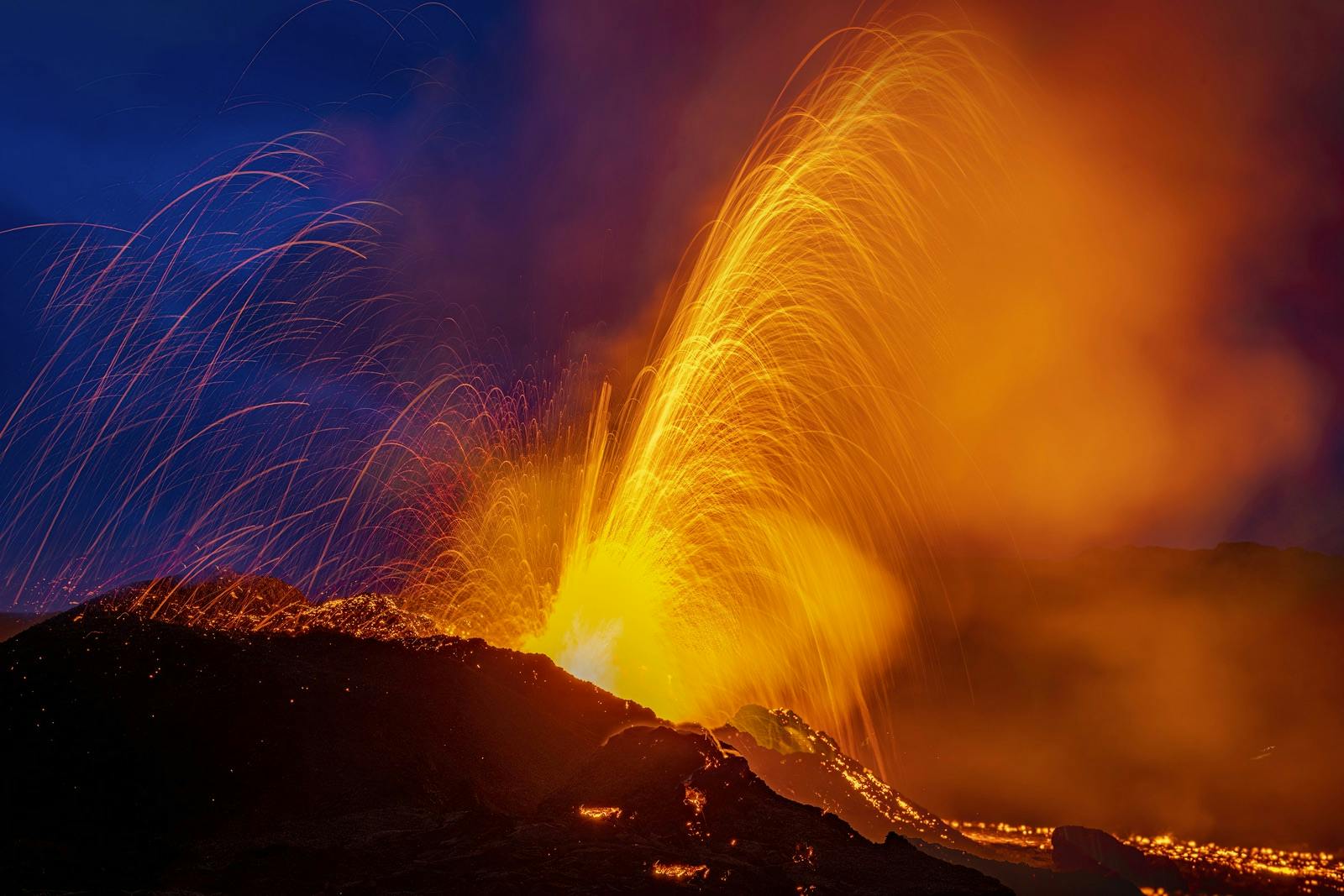
Volcano Museums and Exhibitions in Iceland
If you don't manage to visit an actively erupting volcano in Iceland - Experience its force at one of these excellent volcano museums and exhibitions in Iceland.
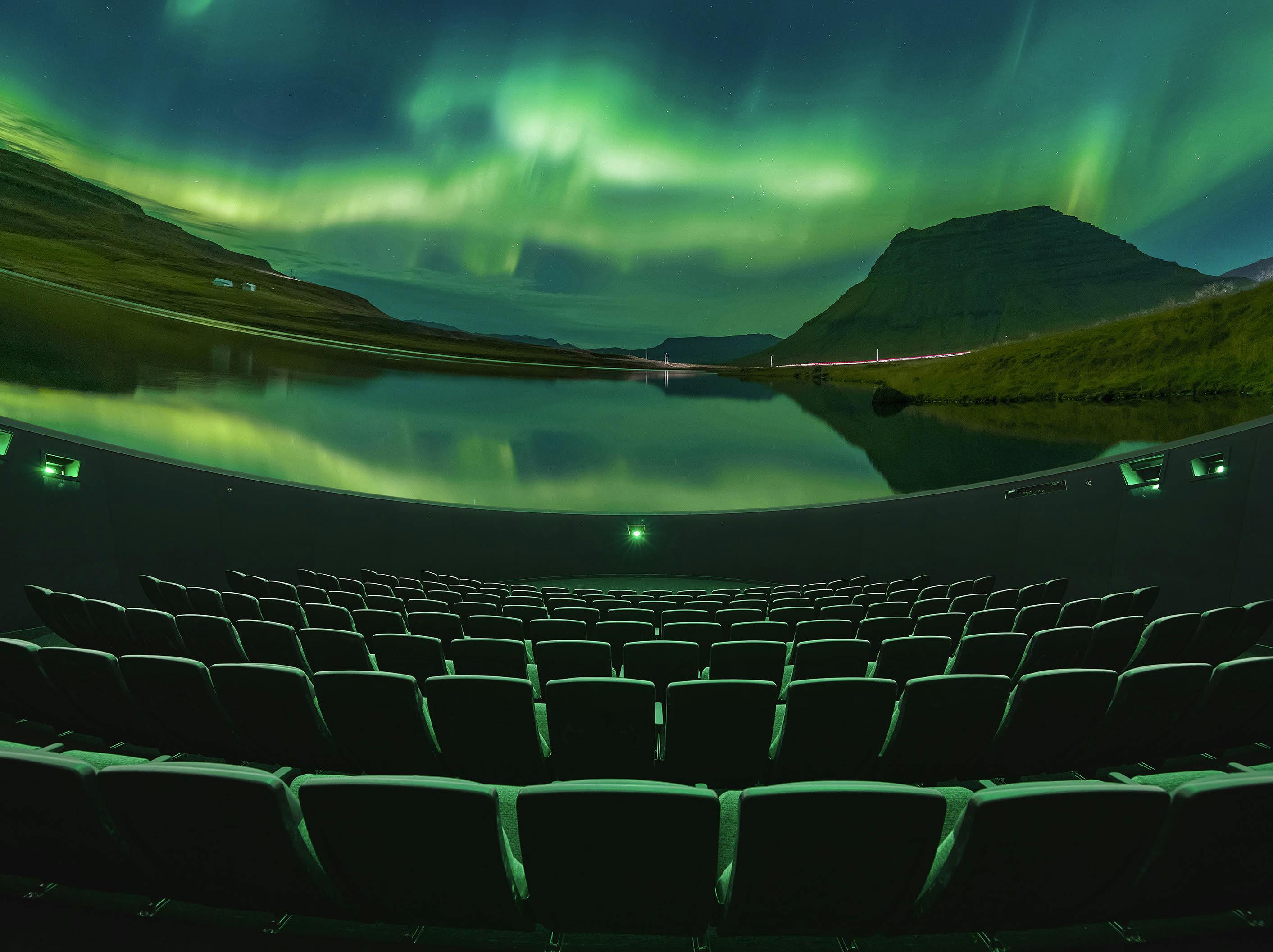
Top 10 Places To See the Northern Lights in Iceland
You can see the northern lights across the country, but some spots are more suitable than others. Find the best place to see the northern lights in Iceland.
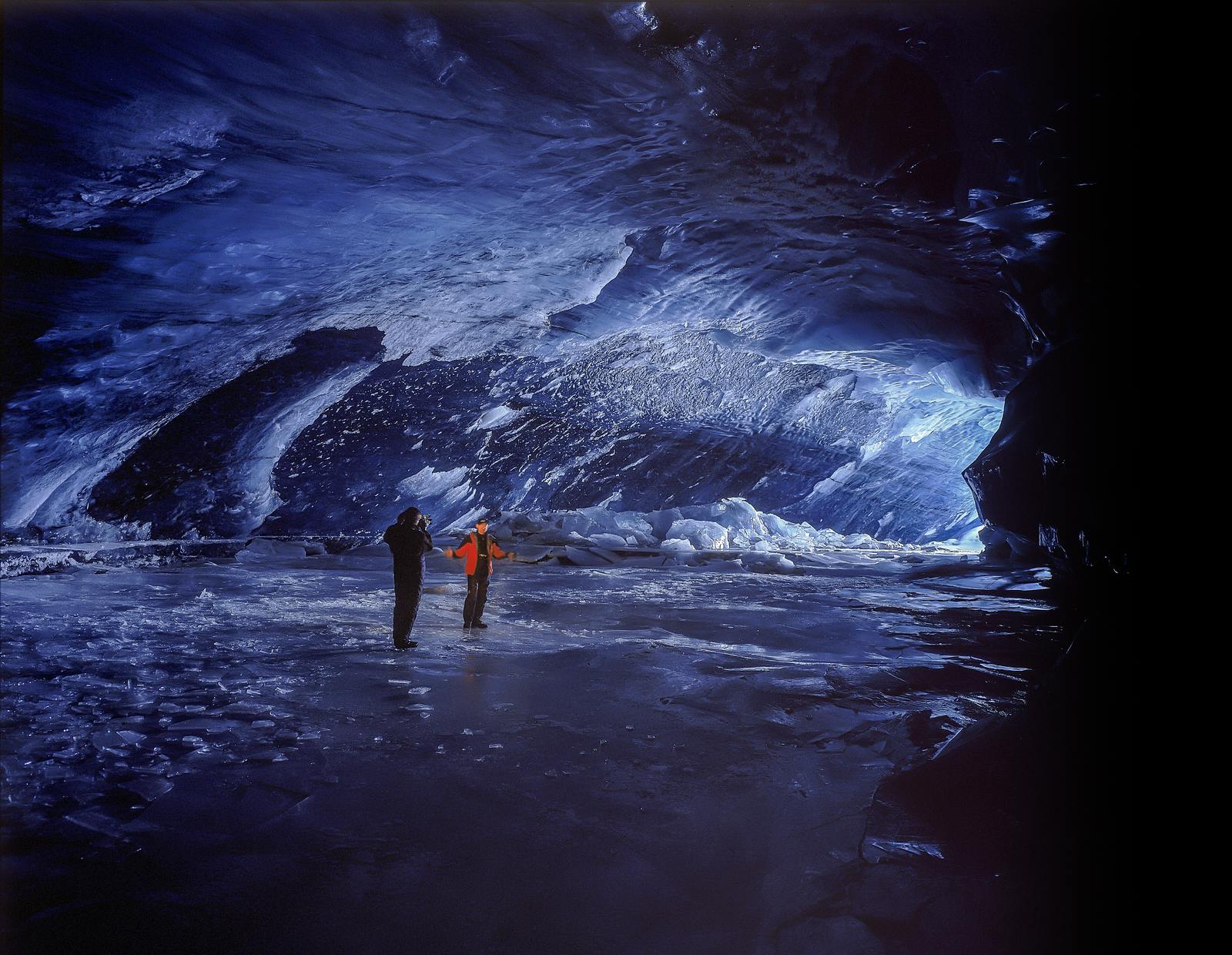
Ice Caves From Reykjavik
Travel beyond the capital for a closer look at an ice cave under one of Iceland’s glaciers. If you can’t spare the time, experience Perlan’s ice cave in Reykjavik.